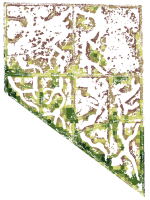The need to validate remote sensing of crime
 Thursday, December 18, 2014 at 8:57AM
Thursday, December 18, 2014 at 8:57AM Kelly, A. and M. Kelly. 2014. Validating the remotely sensed geography of crime: a review of emerging issues. Remote Sensing 6(12): 12723-12751
This paper explores the existing literature on the active detection of crimes using remote sensing technologies. The paper reviews sixty-one studies that use remote sensing to actively detect crime. Considering the serious consequences of misidentifying crimes or sites of crimes (e.g. opening that place and its residents up to potentially needless intrusion, intimidation, surveillance, or violence), the authors were surprised to find a lack of rigorous validation of the remote sensing methods utilized in these studies.
 crime,
crime,  error,
error,  open access,
open access,  remote sensing
remote sensing 

